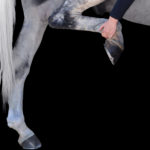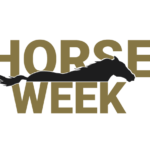Editor’s Note: This is the first in a regular monthly column brought to you by Practical Horseman magazine by veteran journalist Nancy Jaffer about issues affecting hunter/jumper, dressage and eventing disciplines. Check back at PracticalHorsemanMag.com for the next installment.
May 2, 2008 — Has eventing outlived its era? Can a sport with an element of peril that has its roots in a cavalry test stand up to the scrutiny of the Internet and a public horrified by gruesome scenes on cross-country courses?
The recent spate of equine deaths, as well as human fatalities and serious injuries at competitions, prompted a soul-searching initiative from the U.S. Equestrian Federation (USEF) and the U.S. Eventing Association (USEA) on the sport’s future and ways to make it less hazardous.
A Safety Summit is planned for Lexington, Ky., June 7-8, to glean ideas on the subject from anyone willing to put them forth. Even before that, however, the USEF and USEA are discussing rule change proposals designed to stem the tide of tragedies.
Most recently, the disasters include a critical injury in a rotational (somersaulting) fall to Olympic medalist Darren Chiacchia at a March event, and the fatal falls suffered by Frodo Baggins and The Quiet Man in April at the Rolex Kentucky Three-Day Event. Frodo’s rider Laine Ashker, who was hurt in his rotational fall, sustained broken bones and collapsed lungs that put her on the critical list.
But no matter how many qualifying processes, inducements to ride responsibly and fence modifications are instituted, the basic premise of jumping at speed will always hold the threat of danger.
The bottom line, as Rolex Kentucky course designer Michael Etherington-Smith observed: “It is a risk sport. If you don’t like the risk, you don’t play.”
The question is, how much can the risk be reduced without destroying the character of the sport? Or looking at it from another perspective, can nonracing horse sports afford a discipline where death is a distinct possibility, especially in the run-up to the 2010 World Equestrian Games?
Change is Nothing New
There already have been many revisions to eventing’s basic premise since the sport made a transition to civilian life in the 1950s. Even when it was no longer a military exercise, however, eventing for many years had a “finish no matter what” approach, which took its toll on horses and often on riders as well. That was, of course, before the Internet, which sends out a flash when a calamity occurs and provides a forum for anyone who is interested to discuss and dissect it, fanning the flames of controversy.
The sport also has been modified a great deal during the last two decades. It first came under close outside scrutiny after the 1992 Olympics, when TV aired footage of eventing falls (not all of which were filmed at the Games). The Humane Society of the United States made eventing a cause c?l?bre, insisting on modifications. Some were implemented as a result of the organization’s campaign, including barring a competitor from continuing after the fall of a horse on cross-country.

An alteration of greater impact was the elimination of roads and tracks and steeplechase from major events three seasons ago, leading to predictions of doom by some. Former U.S. Combined Training Association President Denny Emerson believes course designers focused on difficult complexes that interrupt the flow of a horse’s gallop as a way to make up for the absence of the speed and endurance elements that previously did a great deal to sort the placings.
Not everyone shares that opinion, but it is one of many theories about why there have been so many accidents. Part of the big problem is that no one can pinpoint just one reason for the recent series of problems, which makes the situation far more difficult to fix.

Roger Haller, the 1996 Olympic course designer, said the growth of the sport means more people are jumping fences today, and while the number of accidents is small in comparison to the number of participants, it’s still more than in the days when fewer people played the game. “When we have these kinds of numbers, we’re going to have this kind of a serious accident. That statistic may be something we can’t combat, but we can try to improve the circumstances to reduce it even more,” he said.
Olympic medalist, commentator, author and trainer Jim Wofford, noted, “I do think it is not so much the fault of the cross-country– because I think the cross-country tests themselves are fine–but what we are asking the horses to do in the dressage and show-jumping is requiring more discipline and domination by the rider, while the cross-country requires agility and initiative on the part of the horse.

“The riders and trainers have focused so much on the element of collection in dressage,” Wofford continued. “Once you start asking that from your horse, the horse starts to surrender his body to the rider. And when he surrenders initially, he surrenders his initiative on Saturday also and then if the rider doesn’t make that decision [on where to take off at a fence] for the horse, they fall.”
Etherington-Smith fears the state of affairs could get even worse if a controversial proposal to make the dressage phase more difficult goes through.
“That has to be taking away from horses’ ability to think for themselves, which is one of the key elements in cross-country,” he said.
He also emphasizes the need for participants to ride responsibly, rather than just focusing on finishing within the optimum time. “One of the really important things is that competitors have to respect fences at all levels. As soon as they lose that respect for fences, they’re going to start traveling too fast and not pay enough attention to them. Course designers can be victims of riders making stupid decisions and blaming other people, not accepting responsibility for themselves.”
Amateur vs. Professional
Wofford believes “the sport is coming to a crossroads” in terms of what is being offered to the amateurs as opposed to the full-time riders.
The sport has “driven the skill curve so high for a professional that people with a job or some other life can’t get there,” he said. “The questions being asked (on cross-country) of professionals are quite legitimate, but they have to be answered by professionals.”

USEF President David O’Connor agrees that greater accommodation must be made for the amateurs and young people who are the base of the sport.
A proposal on the table would set up more levels “so people can choose what they want to do; one is an introductory course and one is more of a technically difficult course,” said O’Connor, calling it a “way to build bridges between the levels that will be beneficial for everybody. This is more of an issue between ‘Do we have all the opportunities for people to play the sport, where we’re not pushing them too hard,’ but we also can’t back down the people who want to push hard.”
There are six national eventing levels now. The new system would be 10 levels, taking away the nomenclature of novice, preliminary etc. and just calling them levels the way the show-jumpers do. Level 3, for instance, would be done at the 1-meter fence height, at a lower speed and not as technical as Level 4, which actually would be a CIC 1-star at the upper end of the speed scale and a little more technical, possibly with a few higher single fences.
O’Connor also is an advocate of mandatory instructor certification, so riders can have proper guidance in going cross-country.
Rule Changes Being Considered
When it comes to some of the circumstances with which eventing is confronted, there are no answers. For instance, as development continues to encroach on open space, fewer competitors have the once-standard experience for eventers of fox hunting or point-to-point racing as a background for riding cross-country.
But in an effort to do something that would have an immediate effect, a new set of proposed rules came out this week, is being discussed and revised by committees, and could be enacted on an emergency basis this month by the USEF Executive Committee. The proposals include suspending a horse and rider for three months after a horse fall at the discretion of the ground jury and having the horse and rider lose their qualifications at that level; eliminating a rider after one fall, rather than two and making every open oxer on every course frangible (breakable).
Why not, one might wonder, simply make all the obstacles out of materials that won’t hurt the animal who hits them? One competitor’s horse crashed completely through a fence in the stadium jumping phase at Rolex, and blithely went on to finish the course, apparently none the worse for wear. What was the difference between that and a similar incident if it had occurred in cross-country? The poles are what fell down, not the horse.
Unfortunately, however, use of crushable material and structures that come apart when hit is still in the developmental stages. Although frangible pins are a solution in many instances for reducing danger at vertical fences, a study is ongoing about their use on horizontal rails. There is work being done on using various types of soft and crushable material for fence construction, but they aren’t yet ready for prime time. Care also must be taken that they don’t cause other problems.
The proposed rules were run by the high performance riders this week, and Robert Costello, the active athlete representative said the riders understand the proposal is “aimed at really getting people’s attention, like ‘Wow, I’ve got to ride a little more thoughtfully.'”

O’Connor noted, “I am pushing this very hard.” He pointed out that while the top professionals are “making our courses look easy, beautiful and fun to watch” at the other extreme, “you get guys not as competent doing it by aggression or being too slow, and they’re the ones affecting the sport.”
While qualifications to move up the levels are already being increased for the 2009 season, “riders are talking about trying maybe to make them harder even still.”
Kevin Baumgardner, president of the USEA, noted about the proposals, “These are obviously just a first step and not intended to be comprehensive rule changes. They highlight something we think is paramount right now, making sure we protect horses and that everyone who goes out on course realizes they have a paramount obligation to their horse. This is just one piece of the puzzle. These proposals are obviously a start, but there is much more to be done.”
Comment on this column and topic in the Practical Horseman forum.






